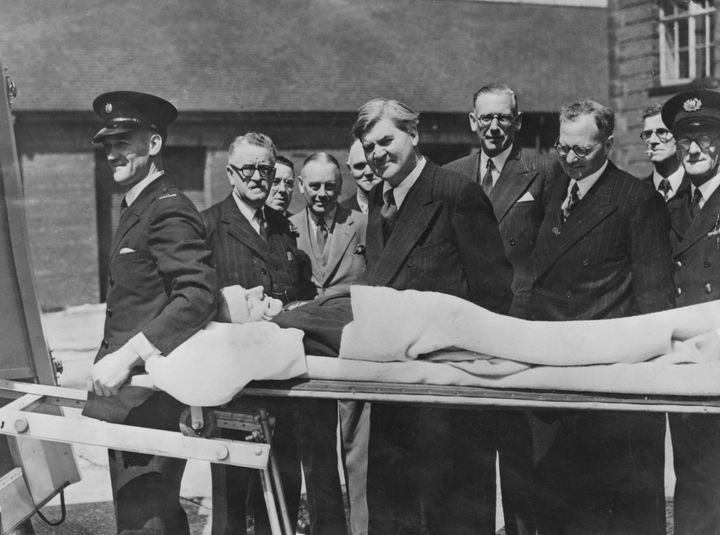
As the NHS turns 75 years old today, a resurfaced pamphlet from 1948 shows what the health service originally promised to Brits.
Amid speculation that the NHS is on its last legs – following years of underfunding and overstretched services, compounded by the pandemic – many are looking back at how it first came into being after World War 2.
To mark its birthday, NHS Million, a campaign group run by NHS workers, shared a snapshot of a leaflet explaining how the National Health Service would work back in 1948.
It reads: “Your new National Health Service begins on 5th July. What is it? How do you get it?
“It will provide you with all medical, dental and nursing care.
“Everyone – rich or poor, man, woman, or child – can ues it or any part of it.
“There are no charges, except for a few special items.
“There are no insurance qualifications.
“But it is not a ‘charity’. You are all paying for it, mainly as taxpayers, and it will relieve your money worries in times of illness.”
The tweet was seen by more than 800,000 people in less than 48 hours.
More information on the same leaflet is available at Socialist Health Association, which explains the public leaflet was issued in February 1948.
According to the website, the pamphlet also says: “You and everyone in your family will be entitled to all usual advice and treatment from a family doctor. Everyone aged 16 and over can choose his or her own doctor. A family need not all have the same doctor, but parents or guardians choose for children under 16.
“Your dealings with your doctor will remain as they are now: personal and confidential. You will visit his surgery, or he will call on you, as may be necessary. The difference is that the doctor will be paid by the Government, out of funds provided by everybody.”
The leaflet also offers further information on maternity services, hospital and specialist services, medicines, drugs and appliances, dental care, eye care, and deafness.
There are a few changes, though.
According to the 1948 pamphlet, it seems medicines and drugs were given out for free from any chemist who took part in the NHS scheme. Now, it costs £9.65 per prescription for most items, although some are still free (contraceptives and medicines for hospital inpatients).
And it’s noteworthy that even then, the pamphlet emphasises how some services would be limited due to a short supply of resources.
It points out that, “at present there are too few dentists to make a full service available to all without delay,” and “specialist ear clinics will be established as resources allow”.
The NHS’s birthday is also a reminder of how, a year after it was set up, the health and labour ministries began a huge recruitment drive throughout the West Indies for NHS staff.
Meanwhile, this week, the government unveiled a long-term workforce plan to more than halve the number of NHS staff recruited from abroad over the next 15 years – amid a severe staffing crisis in NHS England.
The government suggested it planned to train more NHS staff domestically to “reduce reliance on international recruitment and agency staff” – nearly a quarter of the workforce is recruited from overseas right now.
But the government wants to make that 9% through extra training places, apprenticeship schemes and reducing studying time.
At the moment, there are 112,000 vacancies in the service, and there are early predictions this could grow to 360,000 by 2037.
